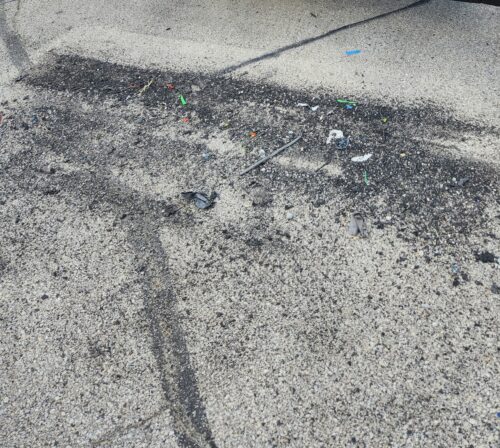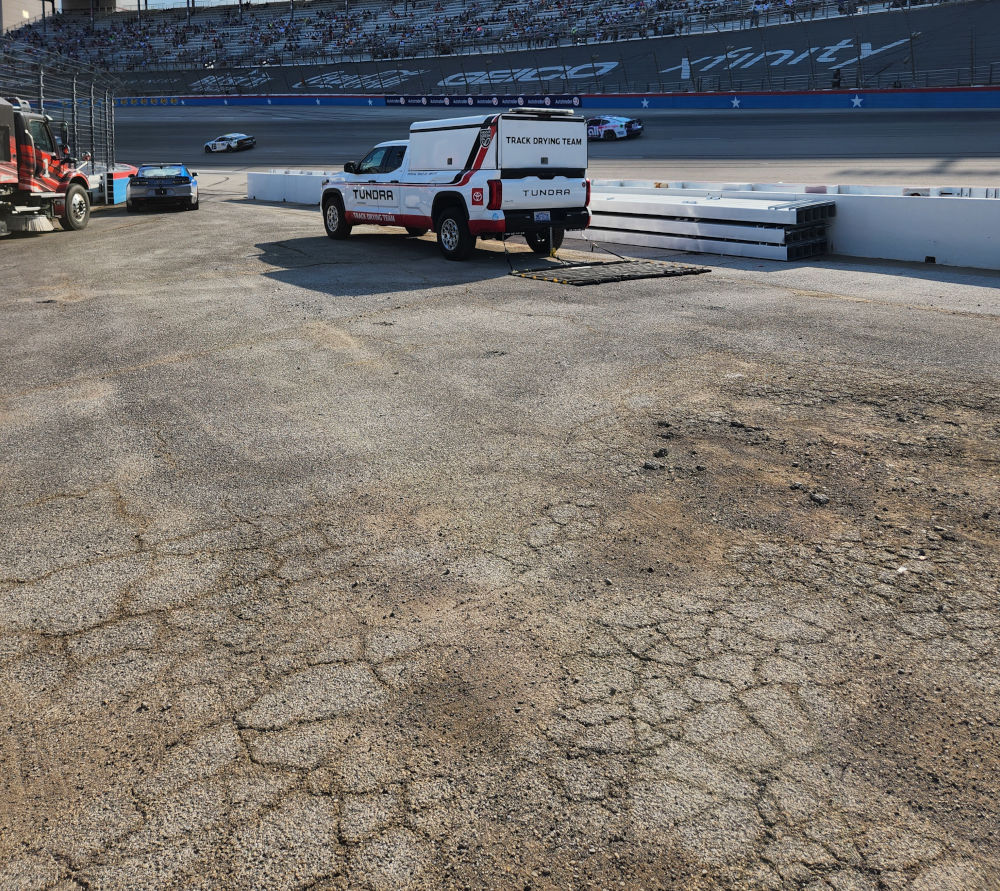Foreign object debris, or FOD, on motor speedways is a critical performance issue that significantly affects the safety of drivers, crews and spectators. From tire fragments to bodywork parts, anything present on a track that is not supposed to be there can pose serious challenges to racing teams and organizers.
In this article, we delve into the various types of debris found on racetracks, explore the implications of debris on performance, discuss safety concerns, and propose strategies for managing debris effectively.
Suggested Resources
Check out our article on Motor Speedway Track Maintenance.
Need some professional grade sweeping equipment? Check out our FOD-Razor® MotoSweep™, our PowerBar™ Magnet Sweepers, or our TracSweep® Pull Behind Rotary Sweepers for inspiration.
Types of Debris Found on Racetracks
Various types of foreign object debris, including loose gravel, rubber marbles and oil spills, can accumulate and pose hazards to drivers.

One of the most common types of race track debris is tire fragments. Also known as marbles, they are created as racing tires wear down, leaving small rubber pieces on the track. Punctures from sharp course debris or collisions with other cars can also contribute to the generation of tire fragments during a race.
Additionally, bodywork parts such as aerodynamic components, mirrors, and even whole panels can become detached during high-speed racing. Triggering events include collisions with other cars, contact with track barriers, abrupt changes in direction, or mechanical failures or fatigue from constant vibrations and impacts.
Oil can appear on a track due to mechanical failures. Leaks from the engine, transmission, or other fluid systems can release oil onto the track surface, creating a hazardous situation for drivers. Additionally, collisions can damage oil lines and other internal systems.
Performance Implications of Debris
The presence of FOD on the racetrack can significantly affect the cars’ performance. This, in turn, can affect lap times, race strategy, and overall competitiveness.
Aerodynamically sensitive components can be affected by debris, leading to decreased downforce and compromised stability. The most commonly affected components include front and rear wings, diffusers, and sidepods, all of which play a crucial role in managing airflow..
Performance and grip levels can also be compromised when debris accumulates on the racing line. It can decrease the grip levels of the tires, leading to reduced cornering speeds as the tires struggle to maintain traction, ultimately resulting in increased wear due to the added stress and strain on the rubber.
Safety Concerns Related to Debris
Debris on racetracks presents serious safety concerns for drivers, crew members, and spectators alike.
In high-speed environments, even small pieces of debris can cause catastrophic accidents by puncturing tires, damaging critical components, or causing drivers to lose control of their vehicles.
Several incidents in motorsports history have highlighted the dangers of foreign objects – including, in once instance, a live snake – underlining the importance of implementing strict safety measures and protocols to minimize risks.

Strategies for Managing Debris on Racetracks
To address the challenges posed by debris on racetracks, various strategies can be implemented.
Regular track inspections and maintenance are essential to identify and remove debris promptly. Personnel should methodically walk the entire length of the track, scanning for any foreign object debris. Utilize drones or specialized cameras to inspect hard-to-reach areas.
Prior to every event, a thorough and comprehensive sweeping regimen should be enacted. Professional sweeping equipment designed to capture small debris and ensure clean racing surfaces should be employed.
During races, specialized safety teams towing specialized track sweepers behind utility vehicles can swiftly clear debris and maintain a safe racing surface. Technological solutions such as debris detection systems and real-time monitoring tools can also enhance safety and efficiency in debris management.
FOD Prevention as Standard Track Maintenance
The impact of debris on motor speedway performance and safety cannot be understated.
Racing teams, organizers, and governing bodies must prioritize the issue of debris management to ensure a clean and safe racing environment for all participants.
By understanding the types of debris encountered on racetracks, recognizing the performance implications, addressing safety concerns, and implementing effective strategies for debris removal, we can enhance the overall racing experience and make motorsports a safer and more enjoyable spectacle for everyone involved.
